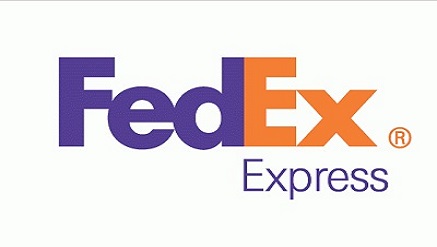General News
FedEx to Increase Shipping Rates, DHL Too

FedEx Express, FedEx Ground and FedEx Freight, subsidiaries of FedEx Corporation will increase shipping rates effective January 5, 2015.
FedEx Express will increase shipping rates by an average of 4.9% for U.S. domestic, U.S. export and U.S. import services.
Similarly, Deutsche Post (DHL) plans to raise the postal rate for a standard domestic letter (up to 20 grams) by 2 cents to EUR 0.62 beginning January 1, 2015.
According to statement by FedEx, its SmartPost rates will also change.
FedEx Freight will increase shipping rates by an average of 4.9%.
This rate change applies to eligible FedEx Freight shipments within the U.S. (including Alaska, Hawaii, Puerto Rico and the U.S. Virgin Islands), between the contiguous U.S. and Canada, within Canada, between the contiguous U.S. and Mexico, and within Mexico.
FedEx previously announced in May 2014 that it will apply dimensional weight pricing to all FedEx Ground shipments.
That change also takes effect January 5, 2015.
Also, as Deutsche Post plans rate adjustments for 2015, it said that cost of standard letter set to increase by two cents to EUR 0.62 as of January 1, 2015.
At this time too, the price for a Kompaktbrief (up to 50 grams) will be reduced by five cents to EUR 0.85.
Domestic delivery rates for other national letter formats, including Grossbrief, Maxibrief and postcards, will remain unchanged. Rates for special services, such as registered mail or payment on delivery (COD), will also remain unchanged in Germany.
Additional rate changes will include an increase of five cents for the international delivery of standard letters and postcards, from EUR 0.75 to EUR 0.80, as well as price adjustments for certain special services, book shipments, press distribution and kilo-rate items.
Several of these rate adjustments require approval from Germany’s Federal Network Agency under the “price-cap” procedure.
Deutsche Post submitted its request to the Federal Network Agency today; the agency now has 14 days to issue its decision.
Through the proposed rate adjustments, Deutsche Post is looking to offset among other things the steep rise in personnel costs.
The company is also investing several hundreds of millions of euros in logistics and infrastructure to ensure its long-term ability to deliver an outstanding quality of service to its customers, even by international standards.
This said, as in past years, the postal rate for a standard domestic letter will remain below the European average letter price.
DHL said that the planned rate increases are being announced early so that customers have sufficient time to prepare accordingly and use up their existing stamps before the rate change takes effect.
“Customers who still have old stamps after the rate increase takes effect can buy supplemental 2-cent stamps in Deutsche Post’s postal outlets or online. In this way, the old stamps can still be used in 2015, and customers must not exchange their old stamps for new ones. The new 62-cent stamps will go on sale in December in Deutsche Post’s postal outlets and online shop. Customers also have the option of printing individual stamps at any time, and with any desired postage amount, using one of Deutsche Post’s 2,900 automated stamp machines available across Germany,” the statement read.
DHL added that advertising mail customers should note that the unit price for bulk mailings with identical content (Infopost Gross format) will increase by three cents to EUR 0.39 per item beginning January 1, 2015.
This marks Deutsche Post’s first rate increase for this product in 18 years. Domestic rates for other Infopost formats will remain unchanged.
2015 will also see a rate increase for the Postwurfspezial product at ten percent on average. This also marks the first rate increase in the last 10 years for Postwurfspezial formats.
General News
Nigeria’s BNPL Market is Projected to Value @ $2.6B by 2030

Nigeria’s Buy Now, Pay Later (BNPL) market is on a fast-growing trajectory and is predicted to be valued $2.61 billion by 2030, up 83% from $1.42 billion in 2024, owing primarily to the rapid emergence of fintechs in the country.

This observation was stated in EnterpriseNGR’s State of Enterprise 2025 report, which focuses on how fintechs are reshaping Nigeria’s business landscape through digital innovations, accessible credit systems, and mobile-first financial tools.
As a credit system, BNPL allows users to stagger payments for products and services, making it a key development driver in Nigeria’s developing digital economy.
From 2021 to 2024, the BNPL experienced a compounded annual growth rate of 23.1%. Fintechs have contributed to the rapid growth by providing a range of flexible loan alternatives for e-commerce, retail, and services, bridging financial gaps for millions of disadvantaged Nigerians.
The report highlights how fintechs have contributed to Nigeria’s flexibility and resiliency by simplifying digital payments, automating invoicing and payroll systems, and democratising credit through platforms such as Renmoney and FairMoney.
The report also shows a significant rise in remittance inflows into Nigeria following the Central Bank of Nigeria’s 2024 policy adjustments.
According to the report, by 2024, Nigeria boasted over 400 licensed digital lenders who extend collateral-free credit to those commonly excluded by banks.
General News
FG, Netherlands Partner on Digital Migration for NIS

The Nigeria Immigration Service (NIS) strengthened bilateral relations with the Netherlands’ government through an agreement targeted at improving migration governance and border security.

This partnership was confirmed during a meeting at the NIS headquarters in Abuja, which was attended by a Dutch team led by Jurgen Bartelink, Chargé D’Affaires of the Embassy of the Netherlands in Nigeria.
The meeting focused on increasing bilateral migration cooperation and came after the comptroller general of Immigration, Kemi Nandap, paid a working visit to the Netherlands.
Under the agreement, the Dutch government pledged to continue supporting technology-driven solutions targeted at boosting Nigeria’s border control systems and improving migration management.
During the Netherlands Embassy diplomats handed over essential operational tools, such as Edison Software licence keys and the Passport Examination Programme Manual App.
According to NIS spokeswoman ACI Akinsola Akinlabi, “The partnership focuses on enhancing bilateral collaboration on migration management and reviewing ongoing capacity-building efforts.”
Bartelink, Chargé d’Affaires of the Netherlands Embassy in Nigeria, underlined the Netherlands’ commitment to helping Nigeria’s continuing border security and migration reforms.
Also speaking, Rob Bokhoven, head of international affairs, repatriation, and deportation services at the Dutch Ministry of Justice and Security, emphasised the country’s strong bilateral relations and announced plans to share a mobile border software solution with the NIS.
Receiving the equipment, Nandap said the delivery of the gadgets would boost West African country’s border security, significantly improve the service’s document verification border management capabilities and support the implementation of Nigeria’s National Migration Policy.
“The engagement will further reinforce the strategic partnership between Nigeria and the Netherlands advancing shared goals in migration governance, border security and international cooperation,” she added.
General News
AfDB Cuts Nigeria’s Growth Projection to 3.2%

Peter Enogb, principal country economist, African Development Bank (AfDB), says the rise in global uncertainty, emanating from increases in global trade tariffs, has slowed Nigeria’s projected growth to 3.2% in 2025.

“Without this level of heightened uncertainty, our projections would probably have been somewhat higher. We’ve reduced our projections for Nigeria. We initially were projecting 3.5% – 3.6% growth in 2025.
“But given the current situation, our models are showing that we’re taking a more cautious approach. So that’s why we produced this and, of course, the main driver is uncertainty in the global economy,” Enogb said.
He said this at the launch of the 2025 Nigeria Country Focus Report (CFR) on Thursday.
AFDB projected that real GDP growth would hit 3.1% in 2026. Following the 2024 consumer price index (CPI) rebasing, with lower weights for food items, the inflation rate is expected to reduce over the medium term to 24.7% in 2025 and 17.3% in 2026.
As imports start to rise over the medium term, the current account is projected to decline to 3.9% of GDP in 2026.
The National Bureau of Statistics (NBS) reported that Nigeria’s headline inflation slowed for the second consecutive month to 22.97% in May. This is down from 24.48% at the start of the year
This is contrary to the World Bank projection that Nigeria’s economy would record steady growth of 3.6% despite the shift in the global trade dynamics.
Joseph Ogebe, head of research and development at Nigerian Economic Summit Group (NESG), also said that global uncertainty had been very high in recent times, resulting from the Trump 2.0 effect.
“And also with the recent war between Israel and the international community, we’ve seen what’s happening to oil prices. Even with the call-off of the war, we’ve seen the effect on oil prices too, which has implications on the fiscal side. So it has implications for the general economy,” he said.
The head of research at NESG said that rather than focusing on just growth, what should be looked at is a strategy called growth with depth.
“Growth with depth means that your growth must be diversified, export-led, productive, and technologically driven,” he said.
Ogebe said that if the Government works towards adopting a strategy of growth with depth, there is a tendency for the government to move towards its goal of achieving a $1 trillion economy by 2030.
The report revealed that the country’s recent policy moves, including fuel subsidy removal, exchange rate unification, and tax reforms, reflect a commitment to long-term transformation.
However, it also pointed out that at about 13%, Nigeria’s tax-to-GDP ratio is among the lowest in West Africa, noting that fiscal reforms are urgent.

 E-Business3 days ago
E-Business3 days agoAfCFTA Positions Africa to Tap into $712bn Digital Trade Market by 2035

 E-Financial3 days ago
E-Financial3 days agoFidelity Bank Clears the Air: MD Not Linked to Woobs Case

 General News3 days ago
General News3 days agoSEC Advocates for Advanced Financial Inclusion by 2030

 E-Business3 days ago
E-Business3 days agoNFIU Credits AML/CFT Reforms behind Nigeria’s Nears Exit from FATF Greylist

 E-Financial2 days ago
E-Financial2 days agoFlutterwave Named in 2025 TIME100 Most Influential Companies List

 General News2 days ago
General News2 days agoAfDB Cuts Nigeria’s Growth Projection to 3.2%

 Broadcasting3 days ago
Broadcasting3 days agoMultiChoice Nigeria Slashes Decoder Price by 50 Percent, Offers Free Upgrades

 E-Financial3 days ago
E-Financial3 days agoKeystone Bank, Enterprise Devt Centre Sign MoU To Empower SMEs ln Nigeria




























